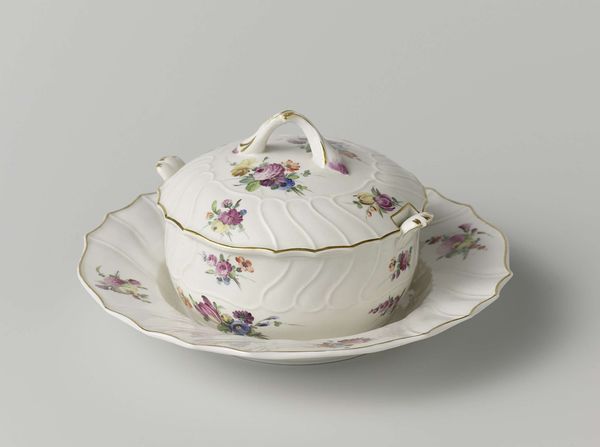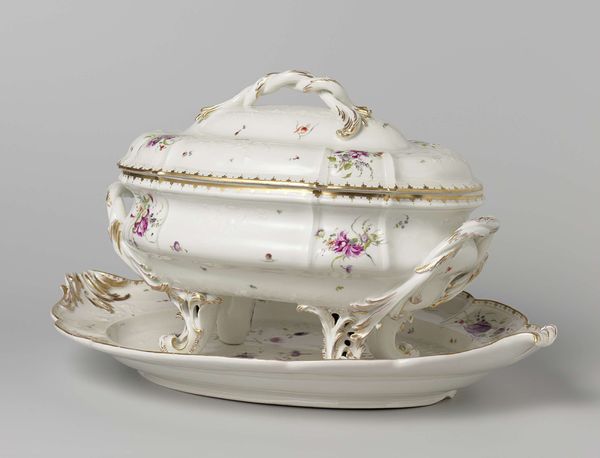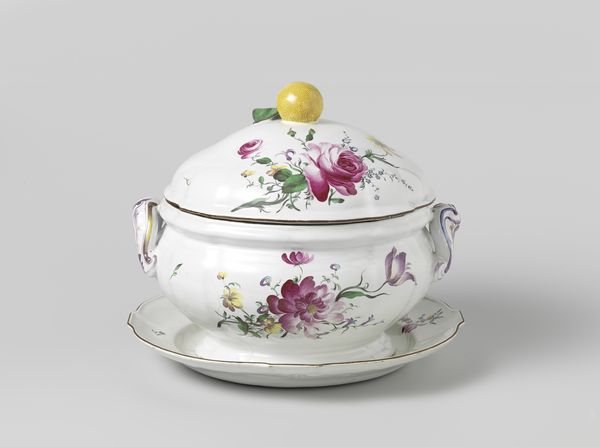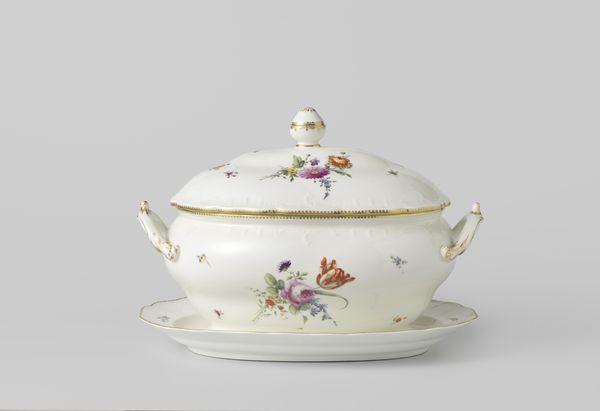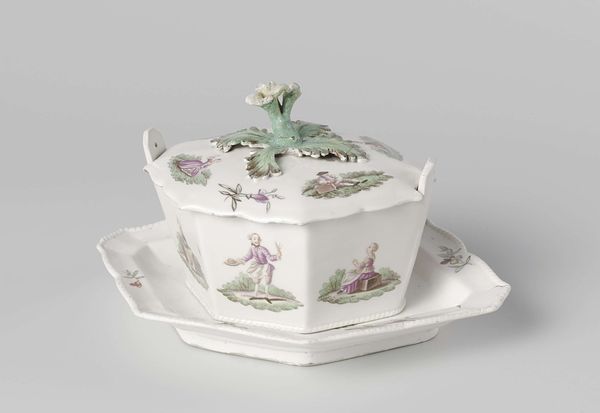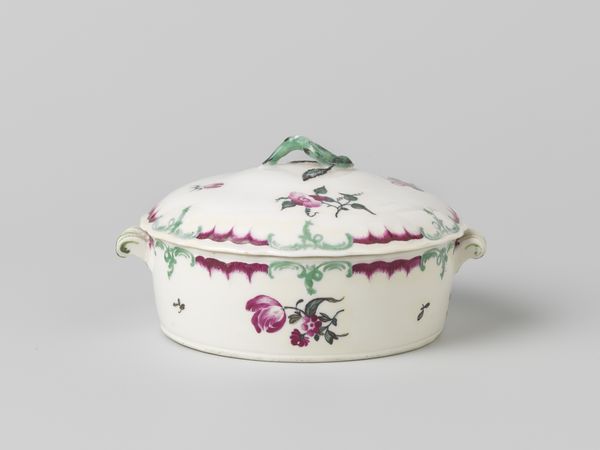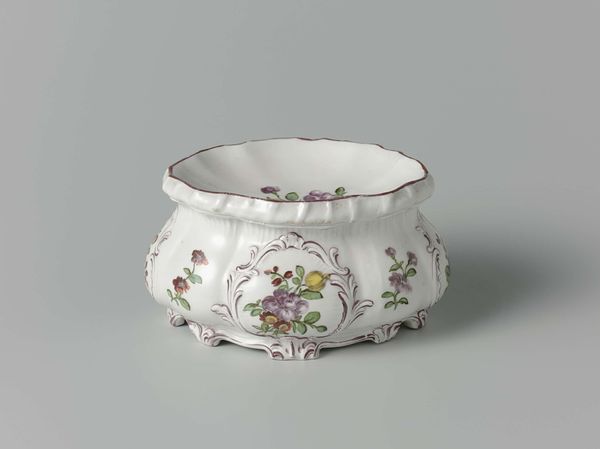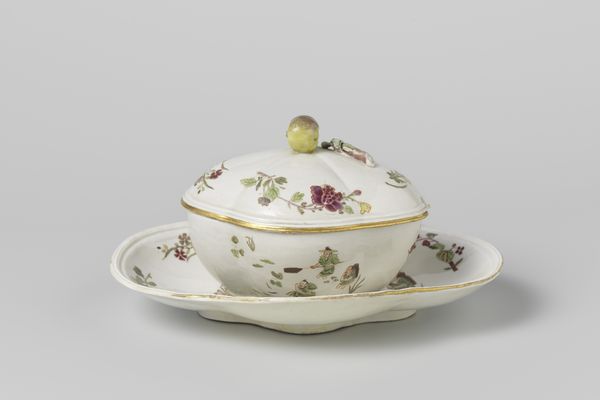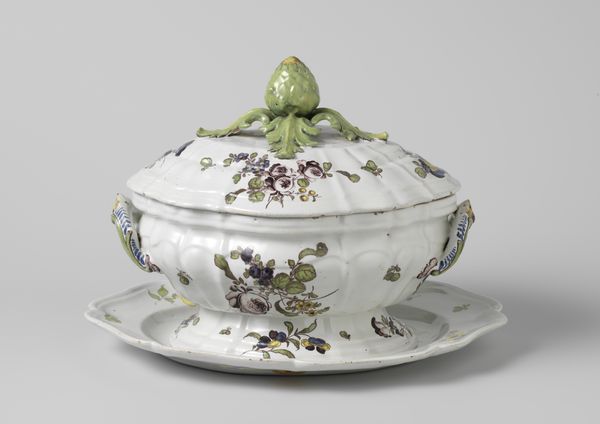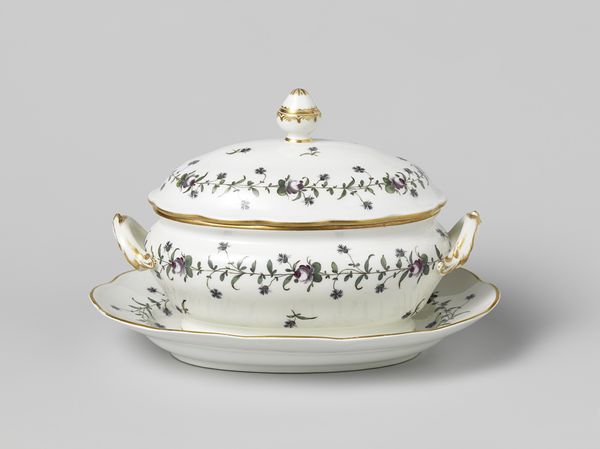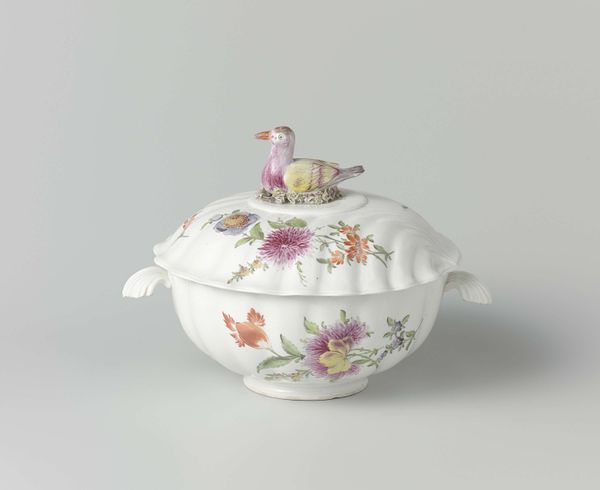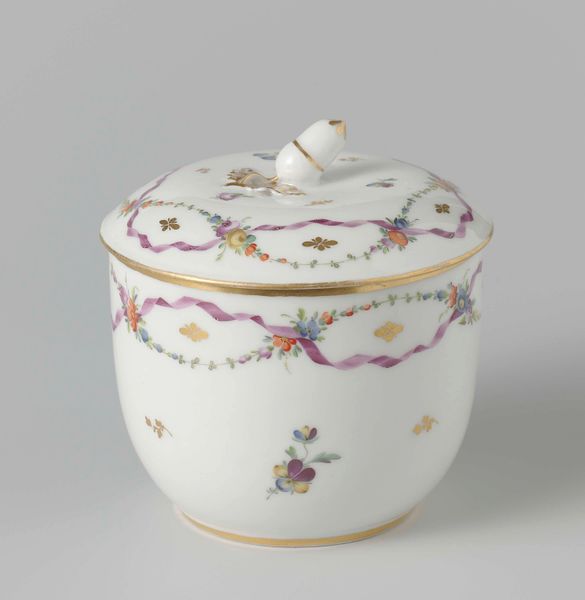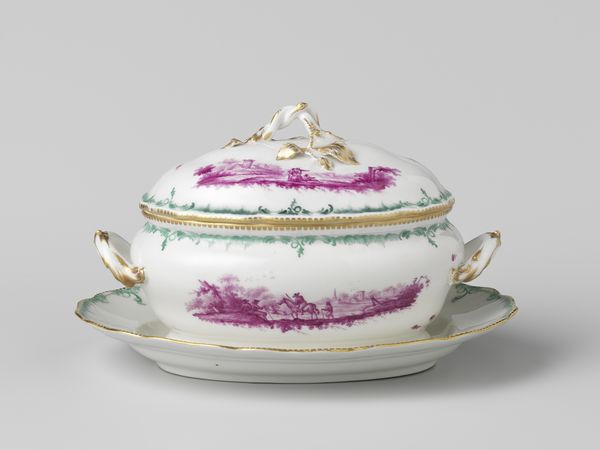
ceramic, porcelain
#
ceramic
#
porcelain
#
decorative-art
#
rococo
Copyright: Rijks Museum: Open Domain
This is a tureen with a stand made out of porcelain, crafted by the Weesper porseleinfabriek. This factory existed in The Netherlands during the late 18th century, a period marked by significant social and political change, and burgeoning colonial trade. The tureen, an object associated with serving food, speaks to cultural rituals of dining and hospitality. During this time porcelain was highly coveted, signifying wealth and refined taste. Yet, its production and use were deeply entangled with colonial exploitation and trade routes that spanned the globe. Raw materials, such as kaolin clay, were sourced through complex networks, often involving the exploitation of labor and resources in colonized lands. Floral motifs and decorative elements draw on aesthetic traditions that were popular among the European elite. While seemingly innocuous, these designs often reflect a desire to appropriate and exoticize elements from other cultures. As you observe this object consider its relationship to the broader dynamics of power, exchange, and cultural appropriation that shaped its creation and consumption.
